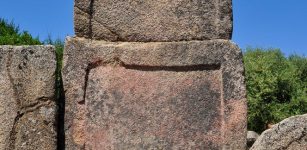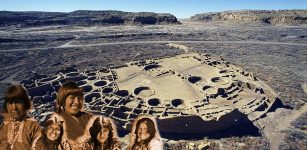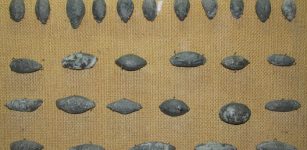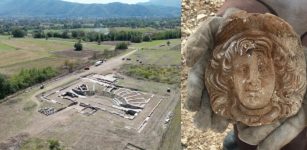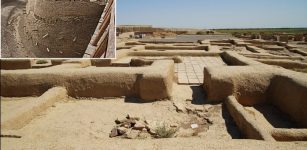Drought Reveals 2,000-Year-Old Rock Carvings In Brazil’s Amazon
Jan Bartek - AncientPages.com - Remarkable ancient engravings that have been submerged for a long time are now visible again at a site known as Praia das Lajes in Brazil.
The rock carvings are not usually visible because they are covered by the waters of the Negro River, whose flow recorded its lowest level in 121 years last week.
Most of the engravings are of human faces, some of them rectangular and others oval, with smiles or grim expressions. Image Credit: AFP
However, an extreme drought in parts of the Amazon has dramatically dropped river water levels, exposing dozens of ancient carvings depicting humans. According to archaeologists, the rock carvings are about 2,000 years old, and the engravings feature anthropomorphic representations of civilizations that inhabited the region.
The first documentation of the ancient engravings was made in 2010 during another drought not as severe as the current one. At the time river's dark waters dropped to 13.63 meters, and now, 13 years later, the Rio Negro continues to break drought records and reveal surprises.
The rock carvings appear against a backdrop of dense jungle, with the low brownish waters of the Negro River flowing nearby.
The last time the ancient carvings were visible was 121 years ago. Image Credit: AFP
Most of the engravings are of human faces, some of them rectangular and others oval, with smiles or grim expressions.
"The site expresses emotions, feelings, it is an engraved rock record, but it has something in common with current works of art," Jaime Oliveira of the Brazilian Institute of Historical Heritage (Iphan) told the AFP.

Archaeologist Jaime Oliveira shows ancient rock engravings that reappeared in the region of the Lajes Archaeological Site due to the severe drought affecting the region's rivers on the banks of the Negro River in Manaus, Amazonas State. Image Credit: AFP
Oliveira emphasizes the engravings comprise an archaeological site of "great relevance.
"The archaeological sites we have observed here represent testimonies of occupation that bring us important points about the societies that lived there. These groups also went through more severe periods of drought than we are experiencing now," Jaime Oliveira told G1 Globo.
According to Oliveira, ancient civilizations made the engravings with tools like axes made from chipped stone.
An extreme drought in parts of the Amazon has led to a dramatic drop in river water levels, exposing dozens of usually submerged rock formations with carvings of human forms that may date back some 2,000 years. Image Credit: AFP
The tools were made in polishing places. There, they produced stone tools. From there, they manufactured materials closer to a hatchet, with a pointed shape, and it was possible to carve these engravings. It was a form of communication. It's complex graphics to create", Oliveira told G1 Globo.
See also: More Archaeology News
"These human figures convey emotions, both happiness and sadness. As we can analyze, some are smiling, and others are discouraged. We can even say that the engravings represent a state of mind and also represent a little of what they experienced during that period", he added.
Written by Jan Bartek - AncientPages.com Staff Writer







